The bronze sculpture with silver inlay of Alexander the Great on horseback, dating back to the 1st century BC, is a stunning artifact from southern Italy. This piece exemplifies the artistic excellence of ancient artisans and captures the enduring legacy of one of history’s greatest conquerors. Follow archeology.dulichvn.net to discover many hidden mysteries that have yet to be discovered.
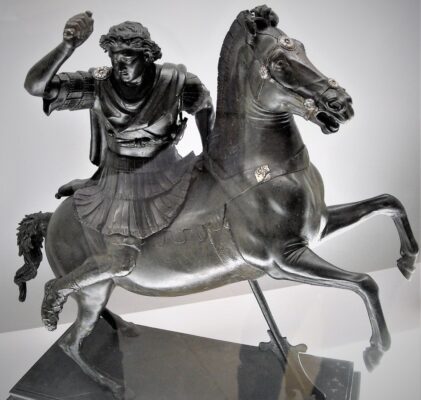
1. The Historical Context of the Sculpture
1.1 Alexander the Great: An Icon of History
Alexander the Great, the illustrious king of Macedon, remains one of the most celebrated figures in human history. Known for his unparalleled military strategies and relentless ambition, Alexander forged an empire that stretched from Greece to the distant lands of India. His conquests not only reshaped the political landscape of the ancient world but also left an indelible mark on art, culture, and governance. As a unifier of civilizations, Alexander became a symbol of leadership, bravery, and ambition, inspiring generations long after his time. His enduring legacy is immortalized in numerous works of art, including this extraordinary bronze sculpture.
1.2 The Role of Art in Hellenistic Culture
During the Hellenistic period, art served as a powerful medium to celebrate and eternalize the achievements of influential figures. This era, characterized by its sophisticated blend of realism and idealism, saw sculptures, mosaics, and paintings depicting gods, heroes, and leaders as larger-than-life figures.
Alexander the Great was a frequent subject, portrayed not only as a mighty conqueror but also as a cultural visionary. The bronze sculpture of Alexander on horseback is a prime example of this tradition, encapsulating his heroism and commanding presence. By combining intricate details with dynamic poses, Hellenistic artists created pieces that resonated with their audience, glorifying their subjects while showcasing their artistic prowess.
1.3 Southern Italy’s Role in Hellenistic Art
Southern Italy, historically referred to as Magna Graecia, played a pivotal role in preserving and advancing Hellenistic artistic traditions. As a vibrant center of Greek culture, this region fostered the creation of artworks that combined classical Greek aesthetics with local influences.
Artists in Magna Graecia adopted and adapted the techniques of their Greek counterparts, infusing their creations with unique regional flair. The bronze sculpture of Alexander the Great reflects this cultural synthesis, embodying the grandeur of Greek artistic traditions while showcasing the distinctive craftsmanship of southern Italian artisans. Such masterpieces highlight the region’s contribution to the Hellenistic artistic legacy, ensuring that the brilliance of this era endures through the ages.
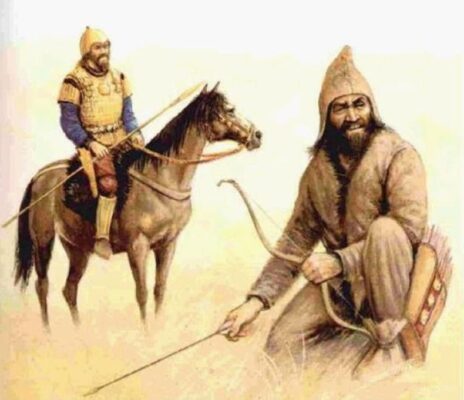
2. Artistic Features of the Bronze Sculpture
2.1 The Mastery of Bronze and Silver Inlay
The bronze sculpture of Alexander the Great is a testament to the extraordinary craftsmanship of ancient artisans. By integrating silver inlay into the design, the artists elevated the sculpture’s aesthetic and narrative qualities. Silver accents, meticulously applied to elements such as the horse’s bridle and Alexander’s armor, draw attention to intricate details, adding layers of contrast and elegance to the piece. This combination of materials not only demonstrates technical prowess but also reflects the opulence and grandeur associated with Alexander’s legendary status.
2.2 A Dynamic Depiction of Motion
This sculpture brilliantly captures a moment of intense action, portraying Alexander the Great mid-ride on his horse. The horse, depicted with its front legs raised, conveys movement and vitality, while Alexander’s upright and commanding posture emphasizes his authority and confidence. The dynamic composition suggests the unstoppable momentum of Alexander’s conquests, mirroring his bold and unrelenting pursuit of greatness. Such a depiction reinforces his image as a leader of unmatched energy and ambition.
2.3 Realism and Expressive Detail
One of the most striking features of this sculpture is its commitment to realism and expressive detail. The muscular contours of the horse are rendered with anatomical precision, showcasing the strength and power of the animal. Alexander’s face, carved with a resolute expression, conveys determination and leadership, offering viewers a glimpse into the character of the legendary conqueror. This level of detail highlights the sophistication of ancient artistry, where the interplay of form and emotion brought sculptures to life, transforming them into timeless symbols of history and culture.
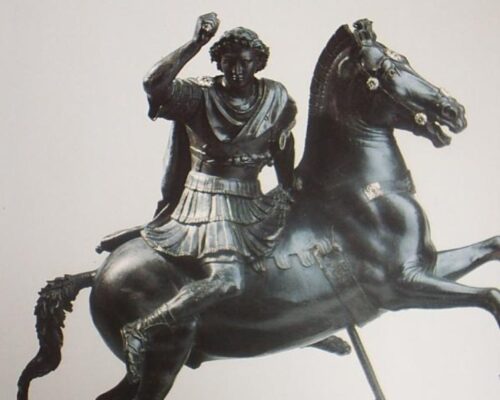
See more: Castellfollit de la Roca: The Village Perched on Basaltic Cliffs
3. The Legacy of the Alexander the Great Sculpture
3.1 Symbolism of Leadership and Heroism
The bronze sculpture of Alexander the Great is a powerful emblem of his unmatched leadership and heroic stature. It captures the essence of a leader who united vast territories under a single empire, embodying qualities such as courage, ambition, and determination. The pose of Alexander atop his rearing horse conveys not only his mastery over his steed but also his ability to command respect and authority. This symbolism elevates the sculpture beyond a mere artistic artifact, transforming it into a timeless representation of human greatness and resilience.
3.2 Influence on Later Art and Culture
This masterpiece has left an indelible mark on the artistic and cultural landscape. Its grandeur and style inspired generations of artists and sculptors, who sought to replicate its dynamic energy and attention to detail in their works. Alexander’s image, often associated with leadership and heroism, became a model for depicting rulers in subsequent civilizations, influencing artistic portrayals of kings, generals, and leaders across eras. The sculpture serves as a bridge between ancient ideals of leadership and their enduring relevance in art and society.
3.3 Preservation and Significance Today
Now preserved in museums, this sculpture continues to captivate audiences worldwide. It serves as a crucial historical artifact, offering insights into the artistic techniques, cultural values, and political ideologies of the Hellenistic era. For historians, it is a tangible connection to the life and legacy of Alexander the Great. For art enthusiasts and the general public, it is a stunning example of ancient craftsmanship and storytelling. Its presence in museums ensures that the memory of Alexander’s influence endures, inspiring future generations to explore and appreciate the rich tapestry of history.
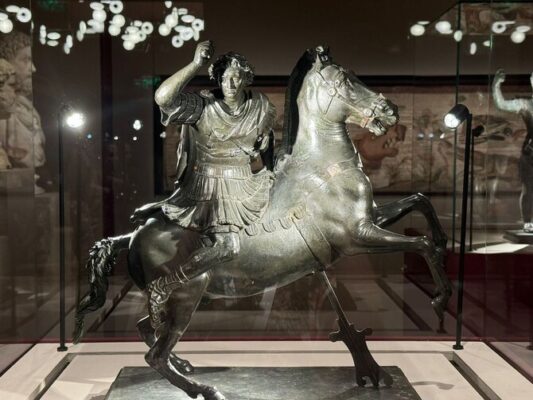
Conclusion
The bronze with silver inlay sculpture of Alexander the Great on horseback is a testament to the artistry and historical significance of the Hellenistic period. Through its exquisite craftsmanship and powerful symbolism, this artifact continues to captivate modern audiences, preserving the legacy of Alexander and the artistic brilliance of ancient southern Italy.

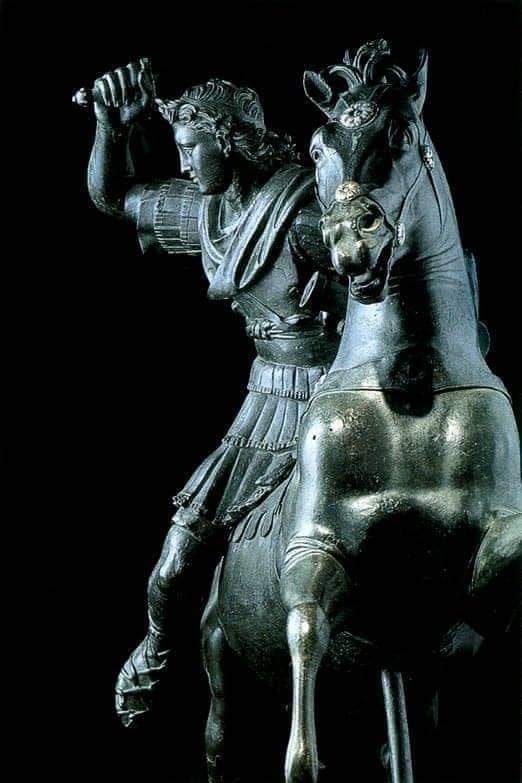
CÁC TIN KHÁC
Mary Walton: The Forgotten Inventor Who Helped Clean Up America’s Cities
Tomb of Queen Nefertari in the Valley of the Queens, Egypt
Discover the Hypostyle Hall of the Temple of Hathor at Dendera
Venus de Losange: Unveiling the Mystery of a 20,000-Year-Old Paleolithic Icon